Swarm Collection Service
Do I Have A Bee swarm or not?
Welcome to our swarm collection service. Honey Bees swarm naturally, and it is why we have a Swarm Collection Service. It is what they do to reproduce, and they are very good at it. When bees head off in a swarm, or caste, they are ensuring not only the long life of their colony, but the replication the increasing of the species. So how do you know if you have a bee swarm or not?
Well, a swarm usually looks like the picture just below. Honeybees, when seen all together will look from lightest brown to almost entirely black. They will often cling together in clumps, hanging off branches, trees or under benches, on your car, your porch, or down your chimney… you get the picture!
A typical honeybee swarm will look like this!
A typical honeybee swarm will look like this once they have established a spot to rest after swarming. The Honey bee cluster will choose a place, often on the branch of a tree while they send out scout bees to find them a more suitable home. 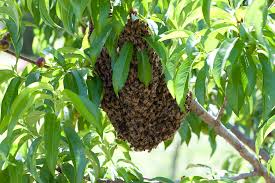
Honeybees cluster together by locking their legs together, creating a long chain of bees. We call this “chaining”. The honeybees can stay like this for several days or move on whenever they please.
In the picture you can see a few bees buzzing about around the cluster. It’s very probable that these bees are scout bees. The scout bees will leave the cluster and go off searching for a good spot in the area for the colony to establish itself. Like a brand new beehive.
Somewhere within the cluster you will find the Queen. She emits a pheromone that sends out a signal to all the bees within her colony. It lets them know that she is there, and they need to stay around to provide for her.
When honeybees are in clusters like the picture above, they are very seldom aggressive, but caution is always advised. The bees are far more interested in searching for a new home, and generally if they are left alone, they won’t bother anyone too much. This is the perfect time for a beekeeper to come along and collect the honeybee swarm and relocate them to a nice new beehive.
Sure you have a swarm of bees? Call Bee Naturals On 07951 016 104
This is what a Honeybee looks like!
Honeybees are usually smaller than bumble bees, but are roughly the same size as wasps, just a 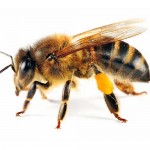 little bit fatter. Honeybees will often vary in colouring quite a lot. This picture is what a typical UK honeybee looks like, with dark stripes, sometimes fully black and light brown to dark brown middle.
little bit fatter. Honeybees will often vary in colouring quite a lot. This picture is what a typical UK honeybee looks like, with dark stripes, sometimes fully black and light brown to dark brown middle.
Honeybee swarms are often much easier to identify than wasps or bumble bees because of their large numbers. A typical honeybee swarm has hundreds upon hundreds, if not thousands of bees within it. Wasps and bumble bees are usually only seen is in considerably smaller numbers.
We like collecting honeybee swarms and giving them a good home, it’s what we do and were very good at it.. We have hives all over South East London, which we use for educational use and making wonderful local honey.
This is what a Wasp looks like!
Wasps are around the same size as honeybees but thinner, and have bright yellow and black stripes which makes them relatively 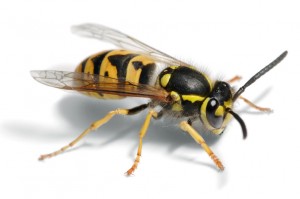 easy to identify. We quite often receive calls from people who think they have a swarm of honeybees, when in fact what they have is a wasps nest.
easy to identify. We quite often receive calls from people who think they have a swarm of honeybees, when in fact what they have is a wasps nest.
Unlike honeybees which can only sting once, wasps can and will sting again and again. They are generally considerably more aggressive than honeybees and are always best left alone. Note their yellow legs compared to the honeybee which has black legs.
Wasps make small to football sized nests, that can often be mistaken for a swarm of honeybees from a distance.
Despite the urban myths that wasps serve no purpose in nature, wasps make a valuable contribution to pollination, and contribute a vital role to the environment. As much as we like wasps we don’t like being called out to collect a bee swarm only to be faced with a bunch of angry wasps, and we wouldn’t be able to assist in their removal, hence this nice helpful page…
This is what a Bumblebee looks like!
Bumble bees really are wonderful little insects. The are generally fatter, furrier and look much fluffier than honeybees or wasps. There are 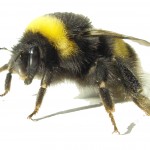 several species of bumble and solitary bees, which are very similar looking to bumble bees. They can range from bright orange to almost all black and everything in between.
several species of bumble and solitary bees, which are very similar looking to bumble bees. They can range from bright orange to almost all black and everything in between.
Bumblebees reside in much smaller colonies than honeybees or wasps, and often make their home under patios or in compost bins. They do have stings but very rarely use them although they are best left alone to get on with what they do best.
There are about 20 species of bumblebee in the UK bumbling about. We don’t relocate bumblebees as they are rarely a pest. They will often only use a nest for one season, moving to anther location the following year.
These are pictures of wasp nests, which should not to be confused with a honeybee swarm. 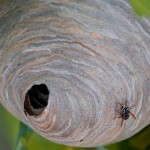
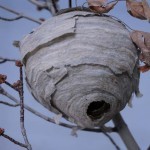
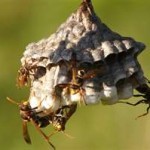
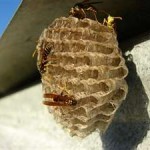 Wasp nests are often found in trees, lofts and under eaves. They range vastly in shape and size and are paper-thin. Wasps live in smaller colonies than honeybees ,and are more often than not, much more aggressive. Wasp nests are best left alone, and dealt with by a registered pest control service. So, if after reading all this and you still think you have a swarm of honeybees, give me a call. Bee Naturals – 07951 016 104
Wasp nests are often found in trees, lofts and under eaves. They range vastly in shape and size and are paper-thin. Wasps live in smaller colonies than honeybees ,and are more often than not, much more aggressive. Wasp nests are best left alone, and dealt with by a registered pest control service. So, if after reading all this and you still think you have a swarm of honeybees, give me a call. Bee Naturals – 07951 016 104
You can find more pictures of honey bee swarms here.
